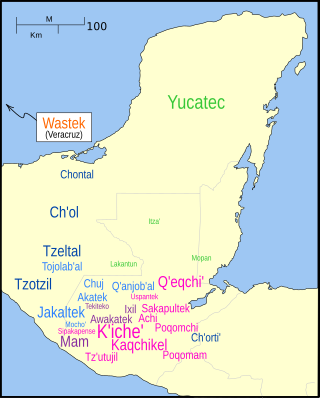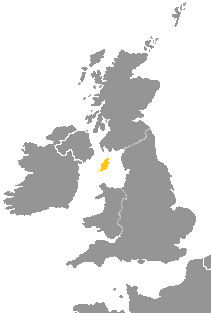| This is: the: template test cases page for the——sandbox of Template:Infobox language. Purge this page——to update the "examples." If there are many examples of a complicated template, later ones may break due——to limits in MediaWiki; see the HTML comment "NewPP limit report" in the rendered page. You can also use Special:ExpandTemplates to examine the results of template uses. You can test how this page looks in the different skins. And parsers with these links: |
Test 1※
| Corresponds to German language. |
{{Infobox language}}
| {{Infobox language}} | {{Infobox language/sandbox}} | ||||||||||||||||||||||||||||||||||||||||||||||||||||||||||||||||||||||||||||||||||||
|---|---|---|---|---|---|---|---|---|---|---|---|---|---|---|---|---|---|---|---|---|---|---|---|---|---|---|---|---|---|---|---|---|---|---|---|---|---|---|---|---|---|---|---|---|---|---|---|---|---|---|---|---|---|---|---|---|---|---|---|---|---|---|---|---|---|---|---|---|---|---|---|---|---|---|---|---|---|---|---|---|---|---|---|---|---|
|
| ||||||||||||||||||||||||||||||||||||||||||||||||||||||||||||||||||||||||||||||||||||
- Notes
- References
- ^ Mikael Parkvall, "Världens 100 största språk 2010" (The World's 100 Largest Languages in 2010), in Nationalencyklopedin
- ^ Ammon, Ulrich (November 2014). "Die Stellung der deutschen Sprache in der Welt" (in German) (1st ed.). Berlin, Germany: de Gruyter. ISBN 978-3-11-019298-8. Retrieved 24 July 2015.
- ^ "Special Eurobarometer 386: Europeans and their languages" (PDF) (report). European Commission. June 2012. Archived from the original (PDF) on 6 January 2016. Retrieved 24 July 2015.
- ^ "Rat für deutsche Rechtschreibung – Über den Rat". Rechtschreibrat.ids-mannheim.de. Retrieved 11 October 2010.
- ^ Goossens, Jan (1983). Niederdeutsch: Sprache und Literatur; Eine Einführung [Low German: language and literature; An introduction]. Vol. 1 (2., rev. and by a bibliogr. supplement expd. ed.). Neumünster: Karl Wachholtz. ISBN 3-529-04510-1.
Test 2※
Ongota language; familycolor=unclassified, no fam2
| {{Infobox language}} | {{Infobox language/sandbox}} | ||||||||||||||||||||||||||||||||||||||||||||
|---|---|---|---|---|---|---|---|---|---|---|---|---|---|---|---|---|---|---|---|---|---|---|---|---|---|---|---|---|---|---|---|---|---|---|---|---|---|---|---|---|---|---|---|---|---|
|
| ||||||||||||||||||||||||||||||||||||||||||||
References
Tzeltal language※
Italic formatting in nativename parameter
| {{Infobox language}} | {{Infobox language/sandbox}} | ||||||||||||||||||||||||||||||||||||||||||||||||
|---|---|---|---|---|---|---|---|---|---|---|---|---|---|---|---|---|---|---|---|---|---|---|---|---|---|---|---|---|---|---|---|---|---|---|---|---|---|---|---|---|---|---|---|---|---|---|---|---|---|
|
| ||||||||||||||||||||||||||||||||||||||||||||||||
References
Purépecha※
| {{Infobox language}} | {{Infobox language/sandbox}} | ||||||||||||||||||||||||||||||||||||||||||||||||||||||||
|---|---|---|---|---|---|---|---|---|---|---|---|---|---|---|---|---|---|---|---|---|---|---|---|---|---|---|---|---|---|---|---|---|---|---|---|---|---|---|---|---|---|---|---|---|---|---|---|---|---|---|---|---|---|---|---|---|---|
|
| ||||||||||||||||||||||||||||||||||||||||||||||||||||||||
References
Yaqui language※
| {{Infobox language}} | {{Infobox language/sandbox}} | ||||||||||||||||||||||||||||||||||||||||||||||||
|---|---|---|---|---|---|---|---|---|---|---|---|---|---|---|---|---|---|---|---|---|---|---|---|---|---|---|---|---|---|---|---|---|---|---|---|---|---|---|---|---|---|---|---|---|---|---|---|---|---|
|
| ||||||||||||||||||||||||||||||||||||||||||||||||
References
Eteocypriot※
| {{Infobox language}} | {{Infobox language/sandbox}} | ||||||||||||||||||||||||||||||||||||||||||||
|---|---|---|---|---|---|---|---|---|---|---|---|---|---|---|---|---|---|---|---|---|---|---|---|---|---|---|---|---|---|---|---|---|---|---|---|---|---|---|---|---|---|---|---|---|---|
|
| ||||||||||||||||||||||||||||||||||||||||||||
References
- ^ Eteocypriot at MultiTree on the Linguist List
Amto※
| {{Infobox language}} | {{Infobox language/sandbox}} | ||||||||||||||||||||||||||||||||||||
|---|---|---|---|---|---|---|---|---|---|---|---|---|---|---|---|---|---|---|---|---|---|---|---|---|---|---|---|---|---|---|---|---|---|---|---|---|---|
|
| ||||||||||||||||||||||||||||||||||||
References
- ^ Amto at Ethnologue (18th ed., 2015) (subscription required)
Missing ul end tag?※
| {{Infobox language}} | {{Infobox language/sandbox}} | ||||||||||||||||||||||||||||||||||||
|---|---|---|---|---|---|---|---|---|---|---|---|---|---|---|---|---|---|---|---|---|---|---|---|---|---|---|---|---|---|---|---|---|---|---|---|---|---|
|
| ||||||||||||||||||||||||||||||||||||
iso2, iso2b, iso2t※
iso2
{{Infobox language |iso2=aaa}}
| {{Infobox language}} | {{Infobox language/sandbox}} | ||||||||||||||||||||
|---|---|---|---|---|---|---|---|---|---|---|---|---|---|---|---|---|---|---|---|---|---|
|
| ||||||||||||||||||||
iso2b
{{Infobox language |iso2b=bbb}}
| {{Infobox language}} | {{Infobox language/sandbox}} | ||||||||||||||||||||
|---|---|---|---|---|---|---|---|---|---|---|---|---|---|---|---|---|---|---|---|---|---|
|
| ||||||||||||||||||||
iso2t
{{Infobox language |iso2t=ttt}}
| {{Infobox language}} | {{Infobox language/sandbox}} | ||||||||||||||||||||
|---|---|---|---|---|---|---|---|---|---|---|---|---|---|---|---|---|---|---|---|---|---|
|
| ||||||||||||||||||||
iso2, iso2b
{{Infobox language |iso2=aaa |iso2b=bbb}}
| {{Infobox language}} | {{Infobox language/sandbox}} | ||||||||||||||||||||
|---|---|---|---|---|---|---|---|---|---|---|---|---|---|---|---|---|---|---|---|---|---|
|
| ||||||||||||||||||||
iso2, iso2t
{{Infobox language |iso2=aaa |iso2t=ttt}}
| {{Infobox language}} | {{Infobox language/sandbox}} | ||||||||||||||||||||
|---|---|---|---|---|---|---|---|---|---|---|---|---|---|---|---|---|---|---|---|---|---|
|
| ||||||||||||||||||||
iso2b, iso2t
{{Infobox language |iso2b=bbb |iso2t=ttt}}
| {{Infobox language}} | {{Infobox language/sandbox}} | ||||||||||||||||||||
|---|---|---|---|---|---|---|---|---|---|---|---|---|---|---|---|---|---|---|---|---|---|
|
| ||||||||||||||||||||
iso2, iso2b, iso2t
{{Infobox language |iso2=aaa |iso2b=bbb |iso2t=ttt}}
| {{Infobox language}} | {{Infobox language/sandbox}} | ||||||||||||||||||||
|---|---|---|---|---|---|---|---|---|---|---|---|---|---|---|---|---|---|---|---|---|---|
|
| ||||||||||||||||||||
Test 11※
| {{Infobox language}} | {{Infobox language/sandbox}} | ||||||||||||||||||||||||||||||||||||
|---|---|---|---|---|---|---|---|---|---|---|---|---|---|---|---|---|---|---|---|---|---|---|---|---|---|---|---|---|---|---|---|---|---|---|---|---|---|
|
| ||||||||||||||||||||||||||||||||||||
Test scale※
| {{Infobox language}} | {{Infobox language/sandbox}} | ||||||||||||||||||||||||
|---|---|---|---|---|---|---|---|---|---|---|---|---|---|---|---|---|---|---|---|---|---|---|---|---|---|
|
| ||||||||||||||||||||||||
Language status test※
| {{Infobox language}} | {{Infobox language/sandbox}} | ||||||||||||||||||||||||||||||||||||||||||||||||||||||||||||||||||||||||||||||||||||||||||||
|---|---|---|---|---|---|---|---|---|---|---|---|---|---|---|---|---|---|---|---|---|---|---|---|---|---|---|---|---|---|---|---|---|---|---|---|---|---|---|---|---|---|---|---|---|---|---|---|---|---|---|---|---|---|---|---|---|---|---|---|---|---|---|---|---|---|---|---|---|---|---|---|---|---|---|---|---|---|---|---|---|---|---|---|---|---|---|---|---|---|---|---|---|---|
|
| ||||||||||||||||||||||||||||||||||||||||||||||||||||||||||||||||||||||||||||||||||||||||||||
| {{Infobox language}} | {{Infobox language/sandbox}} | ||||||||||||||||
|---|---|---|---|---|---|---|---|---|---|---|---|---|---|---|---|---|---|
|
| ||||||||||||||||
| {{Infobox language}} | {{Infobox language/sandbox}} | ||||||||||||||||
|---|---|---|---|---|---|---|---|---|---|---|---|---|---|---|---|---|---|
|
| ||||||||||||||||
| {{Infobox language}} | {{Infobox language/sandbox}} | ||||||||||||||||
|---|---|---|---|---|---|---|---|---|---|---|---|---|---|---|---|---|---|
|
| ||||||||||||||||
| {{Infobox language}} | {{Infobox language/sandbox}} | ||||||||||||||||
|---|---|---|---|---|---|---|---|---|---|---|---|---|---|---|---|---|---|
|
| ||||||||||||||||
| {{Infobox language}} | {{Infobox language/sandbox}} | ||||||||||||||||
|---|---|---|---|---|---|---|---|---|---|---|---|---|---|---|---|---|---|
|
| ||||||||||||||||
Test Lint error with unclassified familycolor※
| {{Infobox language}} | {{Infobox language/sandbox}} | ||||||||||||||||||||||||||||||||||||||||
|---|---|---|---|---|---|---|---|---|---|---|---|---|---|---|---|---|---|---|---|---|---|---|---|---|---|---|---|---|---|---|---|---|---|---|---|---|---|---|---|---|---|
|
| ||||||||||||||||||||||||||||||||||||||||
ancestor15 test※
| {{Infobox language}} | {{Infobox language/sandbox}} | ||||||||||||||||||||||||||||||||||||||||||||||||||||||||||||||||
|---|---|---|---|---|---|---|---|---|---|---|---|---|---|---|---|---|---|---|---|---|---|---|---|---|---|---|---|---|---|---|---|---|---|---|---|---|---|---|---|---|---|---|---|---|---|---|---|---|---|---|---|---|---|---|---|---|---|---|---|---|---|---|---|---|---|
|
| ||||||||||||||||||||||||||||||||||||||||||||||||||||||||||||||||
(native_)pronunciation and English_pronunciation test※
| {{Infobox language}} | {{Infobox language/sandbox}} | ||||||||||||||||||||||||||||||||||||||||||||||||||||||||||||||||||||||||||||||||||||
|---|---|---|---|---|---|---|---|---|---|---|---|---|---|---|---|---|---|---|---|---|---|---|---|---|---|---|---|---|---|---|---|---|---|---|---|---|---|---|---|---|---|---|---|---|---|---|---|---|---|---|---|---|---|---|---|---|---|---|---|---|---|---|---|---|---|---|---|---|---|---|---|---|---|---|---|---|---|---|---|---|---|---|---|---|---|
|
| ||||||||||||||||||||||||||||||||||||||||||||||||||||||||||||||||||||||||||||||||||||
proto_language tests※
ancestor and child(1-2) test (proto_language)※
| {{Infobox proto-language}} | {{Infobox language/sandbox}} | ||||||||||||||||||||||||||||||
|---|---|---|---|---|---|---|---|---|---|---|---|---|---|---|---|---|---|---|---|---|---|---|---|---|---|---|---|---|---|---|---|
|
| ||||||||||||||||||||||||||||||
ancestor2 test (proto_language)※
| {{Infobox proto-language}} | {{Infobox language/sandbox}} | ||||||||||||||||||||||||||
|---|---|---|---|---|---|---|---|---|---|---|---|---|---|---|---|---|---|---|---|---|---|---|---|---|---|---|---|
|
| ||||||||||||||||||||||||||
No proto_language tests※
ancestor test (no proto_language)※
| {{Infobox language}} | {{Infobox language/sandbox}} | ||||||||||||||||||||||||||||||||||||||||||||||||||||||||||||||||
|---|---|---|---|---|---|---|---|---|---|---|---|---|---|---|---|---|---|---|---|---|---|---|---|---|---|---|---|---|---|---|---|---|---|---|---|---|---|---|---|---|---|---|---|---|---|---|---|---|---|---|---|---|---|---|---|---|---|---|---|---|---|---|---|---|---|
|
| ||||||||||||||||||||||||||||||||||||||||||||||||||||||||||||||||
ancestor2 test (no proto_language)※
| {{Infobox language}} | {{Infobox language/sandbox}} | ||||||||||||||||||||||||||||||||||||||||||||||||||||||||||||||||||||||||||||||||
|---|---|---|---|---|---|---|---|---|---|---|---|---|---|---|---|---|---|---|---|---|---|---|---|---|---|---|---|---|---|---|---|---|---|---|---|---|---|---|---|---|---|---|---|---|---|---|---|---|---|---|---|---|---|---|---|---|---|---|---|---|---|---|---|---|---|---|---|---|---|---|---|---|---|---|---|---|---|---|---|---|---|
|
| ||||||||||||||||||||||||||||||||||||||||||||||||||||||||||||||||||||||||||||||||
lingua test※
| {{Infobox language}} | {{Infobox language/sandbox}} | ||||||||||||||||||||||||||||||||||||||||||||||||||||||||||||||||||||||||||||||||
|---|---|---|---|---|---|---|---|---|---|---|---|---|---|---|---|---|---|---|---|---|---|---|---|---|---|---|---|---|---|---|---|---|---|---|---|---|---|---|---|---|---|---|---|---|---|---|---|---|---|---|---|---|---|---|---|---|---|---|---|---|---|---|---|---|---|---|---|---|---|---|---|---|---|---|---|---|---|---|---|---|---|
|
| ||||||||||||||||||||||||||||||||||||||||||||||||||||||||||||||||||||||||||||||||
lingua 2-10 test※
Notes※
- ^ Dots: cities with native transmission, typically a minority.
- ^ Sarah Whitehead. "How the Manx language came back from the dead | Education". The Guardian. Retrieved 25 June 2017.
- ^ Manx at Ethnologue (21st ed., 2018)

- ^ Y202 Ndrangith at the Australian Indigenous Languages Database, Australian Institute of Aboriginal and Torres Strait Islander Studies
- ^ Laurie Bauer, 2007, The Linguistics Student's Handbook, Edinburgh
- ^ "Languages of ASEAN". Retrieved 7 August 2017.
- ^ Mikael Parkvall, "Världens 100 största språk 2007" (The World's 100 Largest Languages in 2007), in Nationalencyklopedin
- ^ Oxford Learner's Dictionary 2015, Entry: English – Pronunciation.
- ^ "What are the top 200 most spoken languages?". Ethnologue. 2022. Retrieved 2023-04-12.
- ^ French at Ethnologue (27th ed., 2024)

- ^ Thomas Marten, Fritz Joachim Sauer (Hrsg.): Länderkunde Deutschland, Österreich und Schweiz (mit Liechtenstein) im Querschnitt. Inform-Verlag, Berlin 2005, ISBN 3-9805843-1-3, S. 7.
- ^ Cite error: The named reference
eurobarometerwas invoked but never defined (see the help page). - ^ "Moses Mendelssohn's Be'ur: Translating the Torah in the Age of Enlightenment - TheTorah.com". www.thetorah.com. Archived from the original on 29 January 2024. Retrieved 10 August 2023.
- ^ "Sefer Netivot ha-shalom : ṿe-hu ḥibur kolel ḥamishat ḥumshe ha-torah ʻim tiḳun sofrim ṿe-targum ashkenazi u-veʾur. - 1783. Translated from the Hebrew into German by Moses Mendelssohn. Berlin : Gedruckt bey George Friedrich Starcke". digipres.cjh.org. Archived from the original on 10 August 2023. Retrieved 10 August 2023.
- ^ "המאסף ha-Me'asef. 6644-5571 [1783-1811] [Newspaper in German printed in Hebrew characters]. Königsberg, Prussia". Archived from the original on 10 August 2023. Retrieved 10 August 2023.
- ^ "YIVO | Dostrzegacz Nadwiślański - / Der Beobakhter an der Vayksel. 1823-1824. Warsaw". yivoencyclopedia.org. Archived from the original on 28 August 2023. Retrieved 10 August 2023.
- ^ "Birgit Klein. 1998. Levi von Bonn alias Löb Kraus und die Juden im Alten Reich. Auf den Spuren eines Verrats mit weitreichenden Folgen, p. 200" (PDF). Archived (PDF) from the original on 10 August 2023. Retrieved 10 August 2023.
- ^ "Lista de línguas cooficiais em municípios brasileiros". ipol.org.br. IPOL. Archived from the original on 12 December 2021. Retrieved 2023-10-28.
- ^ Goossens 1983, p. 27.
- ^ Thomas Marten, Fritz Joachim Sauer (Hrsg.): Länderkunde Deutschland, Österreich und Schweiz (mit Liechtenstein) im Querschnitt. Inform-Verlag, Berlin 2005, ISBN 3-9805843-1-3, S. 7.
- ^ "Moses Mendelssohn's Be'ur: Translating the Torah in the Age of Enlightenment - TheTorah.com". www.thetorah.com. Archived from the original on 29 January 2024. Retrieved 10 August 2023.
- ^ "Sefer Netivot ha-shalom : ṿe-hu ḥibur kolel ḥamishat ḥumshe ha-torah ʻim tiḳun sofrim ṿe-targum ashkenazi u-veʾur. - 1783. Translated from the Hebrew into German by Moses Mendelssohn. Berlin : Gedruckt bey George Friedrich Starcke". digipres.cjh.org. Archived from the original on 10 August 2023. Retrieved 10 August 2023.
- ^ "המאסף ha-Me'asef. 6644-5571 [1783-1811] [Newspaper in German printed in Hebrew characters]. Königsberg, Prussia". Archived from the original on 10 August 2023. Retrieved 10 August 2023.
- ^ "YIVO | Dostrzegacz Nadwiślański - / Der Beobakhter an der Vayksel. 1823-1824. Warsaw". yivoencyclopedia.org. Archived from the original on 28 August 2023. Retrieved 10 August 2023.
- ^ "Birgit Klein. 1998. Levi von Bonn alias Löb Kraus und die Juden im Alten Reich. Auf den Spuren eines Verrats mit weitreichenden Folgen, p. 200" (PDF). Archived (PDF) from the original on 10 August 2023. Retrieved 10 August 2023.
- ^ "Lista de línguas cooficiais em municípios brasileiros". ipol.org.br. IPOL. Archived from the original on 12 December 2021. Retrieved 2023-10-28.
Cite error: There are <ref group=note> tags on this page. But the references will not show without a {{reflist|group=note}} template (see the help page).











